Why Mangal Arati Shankh Ghanta sound is done during pooja (worship) (importance, significance, facts, benefits, uses)
Namaste friends, how are you doing today? Welcome to #BhagavanBhakthi website / blog.
Bhagavan Lord Sri Vishnu (Krishna) (Rama) (Hari) (Narayana) (Trivikrama) (Narasimha) (Vedavyasa) and Goddess Lakshmi (Rukmini) (Sita) (Dharini) blessings to you and your family!
In this website / blog, you will always learn about #Hinduism #Sanskrit language.
Also subscribe to my YouTube channel from this link #BhagavanBhakthi to view videos about #Hinduism #Sanskrit language.
Just before going to “Why Mangal Arati Shankh Ghanta sound is done during pooja (worship) (importance, significance, facts, benefits, uses)”, let us have some brief information.
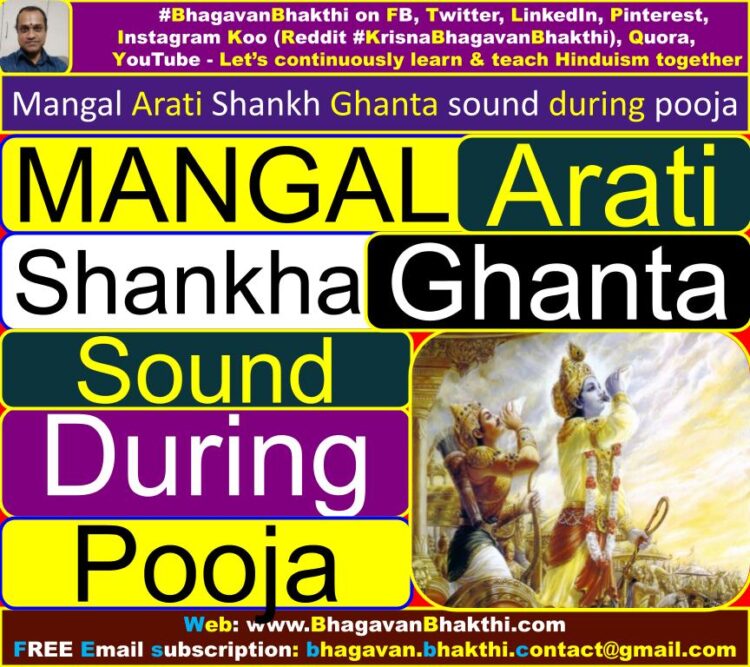
Bharata / India is the oldest Dharma on earth and we (Sanatana Dharmic) are existing on this earth since the unknown time.
Few people tell that Sanatana Dharma is existing since 2k years, few tell that Sanatana Dharma is existing on earth since 3k years and also few tell that Sanatana Dharma is existing since 5k years.
But the reality is, we Bharata Vaasis (Indians) are existing on this earth since ‘adi kalam‘ (Grand unknown time) and will exist until the ‘ananta kalam‘ (Grand infinite time).
One Kali Yuga is 4,32,000 years. One Dwapara Yuga is 2 * Kali Yuga = 2 * 4,32,000 = 8,64,000 years.
One Treta Yuga = 3 * Kali Yuga = 3 * 4,32,000 = 12,96,000 years. One Satya / Kruta Yuga = 4 * Kali Yuga = 4 * 4,32,000 = 17,28,000 years.
And all these four Yugas collectively known as one Mahayuga. Thus infinite number of such Mahayugas has passed and all these time we (Bharata Vaasis / Indians) have been doing pooja / mangala arati etc.
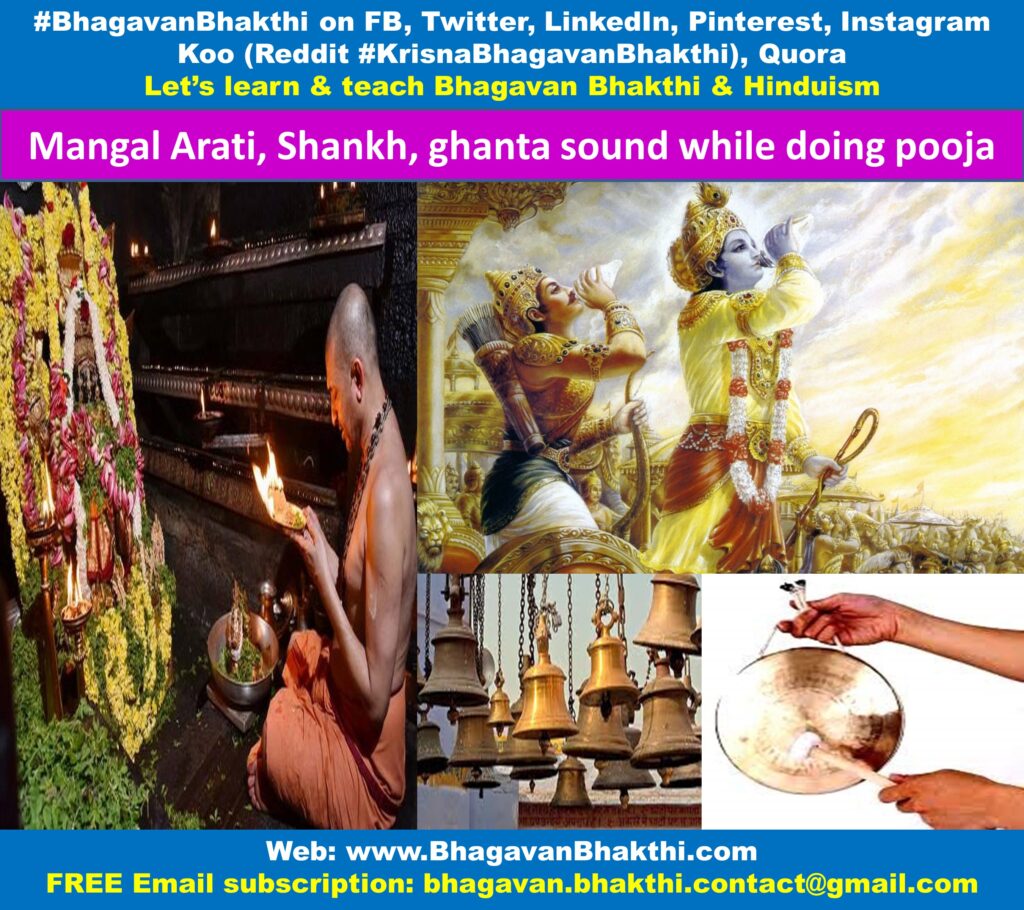
Now, let us know:
Why do we do Mangala Arati, when doing pooja? | Why we blow Shankha (conch), when doing pooja? | Why we do sound of Ghanta (bell), when doing pooja? | Why we do sound of jagata (jagate), when doing pooja? | etc.
When we do the most auspicious Parama Mangala Arati pooja of Lord Sri Hari / Sri Rama / Sri Krishna or any Devata (Demigods),
we can get the direct darshan of Bhagavan Lord Sri Vishnu (God) or Devatas (Demigods) (to whom we are doing the pooja) with the light of the most Parama Mangala Arati.
We can do the most auspicious Parama Mangala (most auspicious) darshan of Bhagavan (or Devatas) through the:
Shaligrama (Saligrama) (Shaligram) of the Lord Sri Vishnu (Bhagavan) (God) or through a statue or through a photo of the Bhagavan or Devatas.
By doing this, we get the chance to be reborn as a bhakta (devotee) of Lord Sri Vishnu in the next seven lives, that is – we get a chance to be reborn as a Vaishnava (Vaishnav) as per our Great Sanatana Dharma Shastras (Texts).
Just doing one Mangala Arati means, we will be reborn as a Vaishnava Bhakta (devotee) of Lord Sri Vishnu / Sri Hari / Sri Rama / Sri Krishna in the next seven lives.
During this most auspicious Parama Mangala (most auspicious) time, nobody wants the entry of the asuras / rakshasas (demons) (this is applicable even after or before doing the pooja). We don’t want to be get harmed by these asuras / rakshasas (demons).
(In this Kali Yuga even asuras / rakshasas / demons look like humans itself, thus we need to avoid these types of asuras / rakshasas / demons in our whole life and permanently).
We don’t want to get in touch with these types of people. Thus we need to do sound of Shankha (conch), Ghantha (bell), Jagata (jagate) while doing the most auspicious Parama Mangala Arati.
Where the sounds of Shankha, Ghantam, Jagata (Jagate) are done, in these types of places asuras / rakshasas / demons won’t be there. Asuras / rakshasa / demons can’t tolerate the sounds of the most auspicious sounds of the Shankha, Ghantha, Jagata (Jagate).
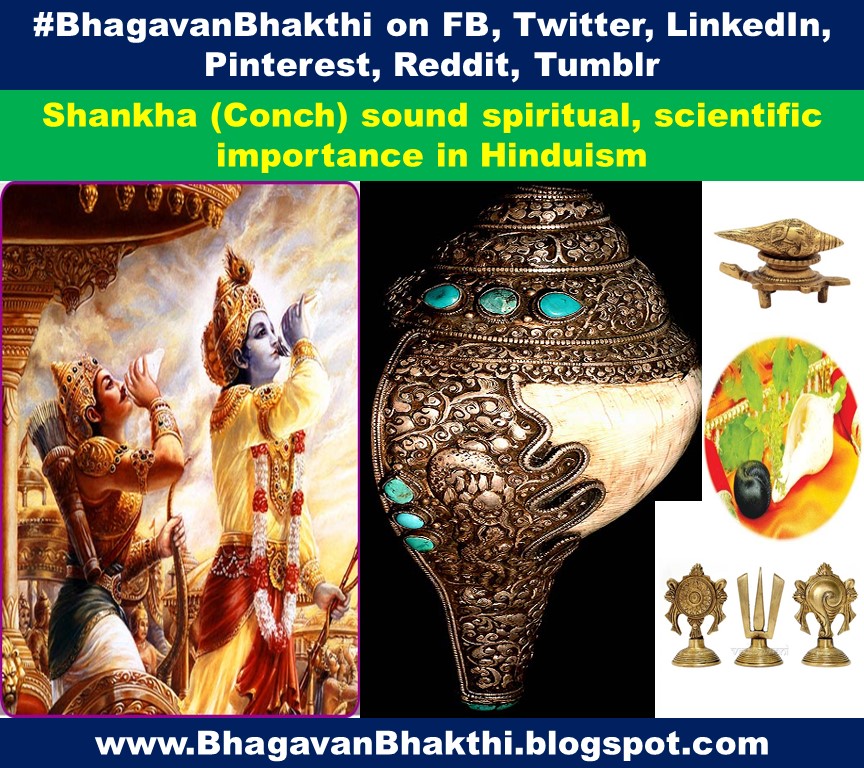
They just can’t even hear / bear these most auspicious Parama Mangala shabdhas (sounds). They can’t endure these types of most auspicious sounds of the Shankha, Ghantam, jagata.
Whereas these sounds are very very much dear to our Lord Sri Vishnu / Sri Hari / Sri Rama / Sri Krishna and his Devatas (Demigods). We need to make Lord Sri Vishnu / Sri Hari / Sri Rama / Sri Krishna and Devatas (Demigods) happy.
Also we need to keep away from the asura / rakshasas / demons people from us permanently. The solution for the both of the above reasons is only one.
Just do the most auspicious Parama Mangala Arati of Lord Sri Vishnu Sri Hari / Sri Rama / Sri Krishna and Devatas (Demigods) with utmost bhakti (devotion).
This will make Lord Sri Vishnu / Sri Hari / Sri Rama / Sri Krishna and Devatas (Demigods) happy. In the same way, all the asuras / rakshasa / demons people will go away from us permanently.
Do remember, we need to do the pooja on the daily basis to get these great benefits and ones in a while.
So why are you waiting?
Just keep on doing the most auspicious Parama Mangala Arati of Lord Sri / Sri Hari / Sri Rama / Sri Krishna and other Devatas (Demigods). With this, Lord Sri Vishnu and Devatas (Demigods) will be happy on us.
Similarly all the asuras / rakshasas / demons type of people will go away from us permanently. Start doing the most auspicious Parama Mangala Arati of Sri Hari / Sri Rama / Sri Krishna and other Devatas with utmost bhakti (devotion).
Start doing sounds of Shankha, Ghantham, jagata from today and now itself with utmost bhakti (devotion). Let’s make Sri Hari / Sri Rama / Sri Krishna happy. Let all the asuras / rakshasas svabhava (natured) people run away from us.
In the meantime, keep in mind we shouldn’t be disturbing anyone.
Now, let us move forward and understand more important point about Shankha:
The Shankha (Shankh) is one of the most revered pooja (worshippable) item for Hindus since unknown and ancient times. In the past the birth of the Great people, Kings, Devatas etc. were announced by making the the most divine sound of the Shankha.
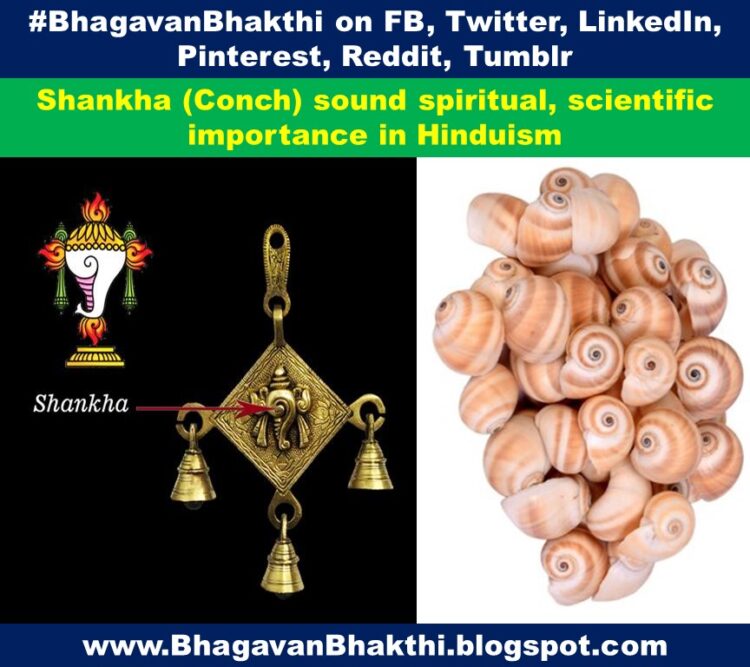
The Shankha was also used to indicate the arrival of the Maharishis and the emperors. In some parts of India, some sects of people practice rituals during the funeral by making the sound of Shankha.
The sounds emanating from the string, the conch (Shankha), the nadasvara, the horn sound and the taala (rhythm) are called ‘Pancha Maha Shabdhas‘ (five great sounds). Until the 3rd to the 6th century AD, some emperors had held the title of ‘Pancha Maha Shabdha‘.
Ancient writings reveal that some Kings bestowed this title on their subordinates, great warriors. According to Hindu Puranas, among the eighteen instruments, Shankha’s sound was also one of the prominent sounds.
For this reason this was not just used for making sound, but is also been used for doing the ‘abhisheka’ (divine water on God) of God in houses and temples.
“शंखम चन्द्रार्का दैवत्वम मध्ये वरुण दैवत वृष्टे प्रजावते नत्वं एतत शंखं व्रवूजएत”
“ಶಂಖಂ ಚಂದ್ರಾರ್ಕ ದೈವತ್ವಂ ಮಧ್ಯೇ ವರುಣ ದೈವತ ವೃಷ್ಟೇ ಪ್ರಜಾವತೆ ನತ್ಪಂ ಏತತ್ ಶಂಖಂ ವ್ರವೂಜಯೇತ್”
“śaṅkhaṁ candrārka daivatvaṁ madhyē varuṇa daivata vr̥ṣṭē prajāvate natpaṁ ētat śaṅkhaṁ vravūjayēt”
The above hymn worshiping the Shankha emphasizes the importance of the Shankha while worshipping. Mainly there are four types of Shankhas, that is, ‘Valampuri’, ‘Idampuri’, ‘Chalamkalam’ and ‘Panchajanyam’.
Some temples in South India, have one thousand and eight Shankhas. On few special occasions, in the above mentioned Shankhas, the ‘pavitra ganga’ (divine water of Ganges) water is kept and the ‘Maha Abhisheka’ is been done for the God’s idol.
Greatness of Shankha during Ramayana and Mahabharata period:
In the Ramayana and Mahabharata, the role of Shankha is very important. At that time, each of the popular personalities (including Devatas) had a Shankha and also had a separate name for each of their Shankhas.
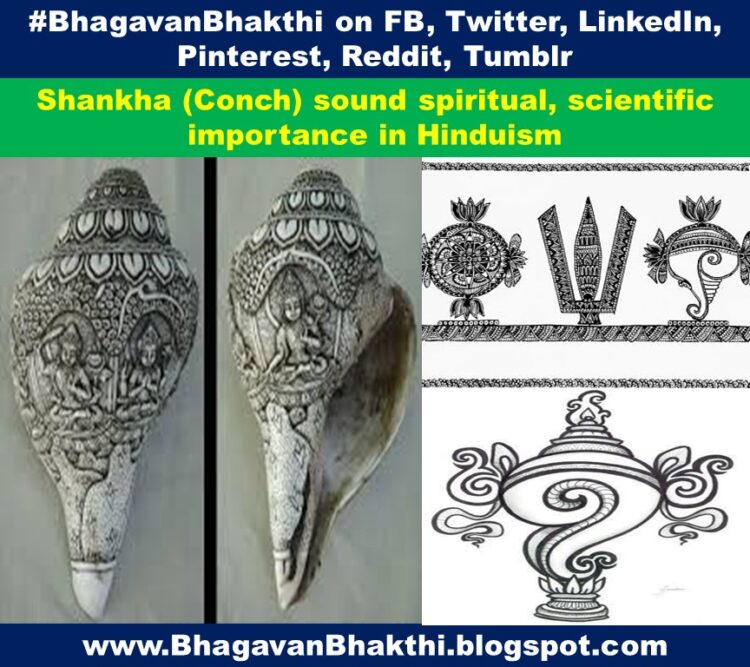
The name of Bhagavan Sri Krishna’s Shankha is called ‘Panchajanya‘. | Arjuna’s Shankha is called ‘Devadatta‘. | Bhima’s Shankha is called ‘Paundra‘. | Yudhisthira’s Shankha is called ‘Ananta Vijaya‘. | Nakula’s Shankha is called ‘Sughosha‘. | Sahadeva’s Shankha is called as ‘Manipushpaka‘.
Since Bhagavan Vishnu holds the Shankha in his left hand, the Shankha will gain it’s shine and great power as it is present in the hand of Bhagavan Vishnu.
The hymns describe Bhagavan Sri Vishnu as the ‘Shankha Chakra Gada Hasta’ as he holds the Shankha, Chakra Gada in his hands. Among the ‘Navanidhis‘ (nine wealths) that Kubera had, the inexhaustible wealth he had was called as ‘Shankha Nidhi’.
Some of the major temples have their own separate ‘vaada vrunga’ (musical instruments), among those musical instruments ‘Shankha vaadya’ (divine sound of Shankha) has it’s own special status.
Such Shankhas are specially decorated in most of the days. The blowing part of the Shankha usually carries a silver layered metallic peacock feather. The Shankha can be blown from either of the sides.
This been a very ancient instrument, it is not popular because it is difficult to learn and needs a strong lungs’ power to blow these Shankhas. This may be the reason that, this is not a popular instrument among the common people.
Shankhas as per the Science – From a scientific point of view, the Shankha has attracted the attention of scientists too. When breath enters the Shankha while blowing it, at that point when air crosses the curve inside the Shankha, the speed of the air increases enormously.
Thus, experiments have shown that the temperature will increase inside the Shankha and thus the temperature increases inside and outside of the Shankha with the blow of the air.
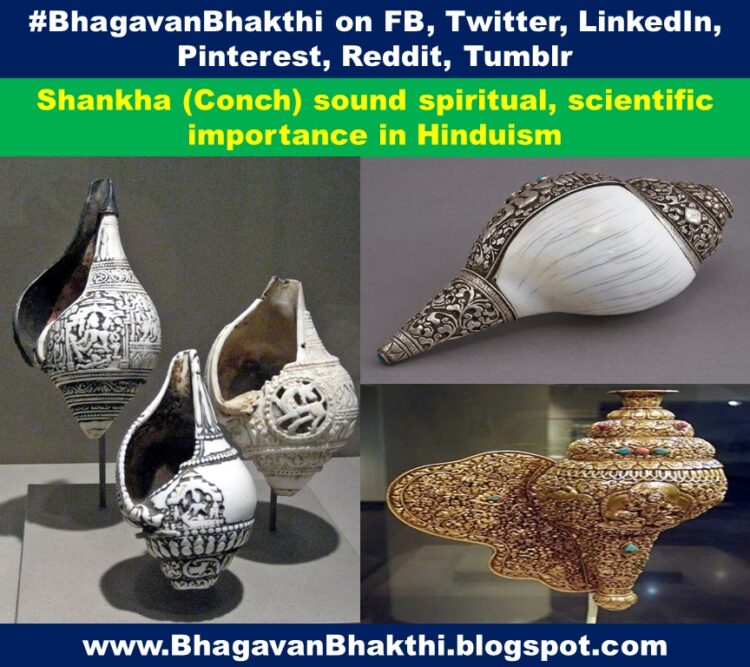
If the temperature of the air coming out of the cone is 8%, experimental results show that the outer air is moving at an average speed of 8708 feet per second.
As a result, the amount of harmful bacterias in the atmosphere will be destroyed and the amount of positive moisture in the atmosphere will increase. With these experiments, scientists have found that the air we breathe in such an environment can increase the body’s immune system exponentially.
As per ‘Dhanvantari Science’, the Shankha’s description is as follows:
शंख नादु कटु वाके | वियोश्ण व्रकीर्तित | परिणाम जएत शूलं | चक्षुषं रक्त पित्तजित
ಶಂಖ ನಾದು ಕಟು ವಾಕೇ | ವಿಯೋಷ್ಣ ವ್ರಕೀರ್ತಿತ | ಪರಿಣಾಮ ಜಯೇತ್ ಶೂಲಂ | ಚಕ್ಷುಷಂ ರಕ್ತಪಿತ್ತಜಿತ
śaṅkha nādu kaṭu vākē | viyōṣṇa vrakīrtita | pariṇāma jayēt śūlaṁ | cakṣuṣaṁ raktapittajita
Although, Shankha may be the cause for the taste, after digestion, it will be highly useful to the body.
Although it is born (found) in the sea, due to the ‘jeernagni’ (fire burning inside stomach) of the digestive tract, it is called as ‘Vishnuveerya’. This usually cures the abdominal pain, eye related diseases and bleeding.
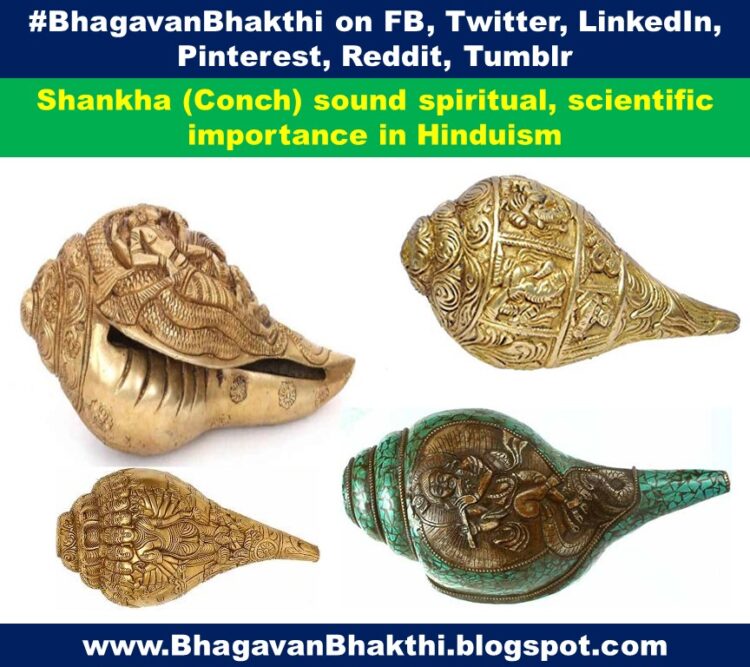
If the Shankha is immersed with water, honey, lemon juice and this water, honey, lemon juice is taken by us, Ayurveda says that it will alleviate the acidity in stomach, dizziness, acne, abscess etc.
Children who can’t speak properly (stammering) can drink water in which Shankha is immersed. This will help them in improving their speech.
The patients who have the phonetic defect, must blow the Shankha for some time everyday. This will also help in improving the speech quality. This can also alleviate hearing loss.
In some parts of Uttar Pradesh (U.P), children who do not speak well are given to wear a small necklace which is made using the small Shankhas.
Thus, these are few known, useful and revered points about the Shankha from the time of the unknown age (Hindu Sanatana Dharma age) to the present day.
Uniqueness of the sound of the Shankha – If we keep the Shankha near our ear, one special sound like ‘gui…’ is heard. Isn’t it? For this sound itself, the researchers call it as “Natural Vibration” or Earth’s “Cosmic Energy”.
Researchers have witnessed that these always flow in the Shankha. The vibration that is created from the Shankha’s sound, destroys many of the worst negative forces on earth.
Scientists say that holes in the ozone layer and environmental pollution can be prevented using the Shankha and it’s sound. Positive Psychological Vibrations move in our body when we hear the sound of Shankha.
This will help us to develop such qualities as courage, determination, faith and confidence within ourselves.
Other significances of Shankha is as given below:
Blowing the Shankaha on regular basis, will strengthen our lungs. Research shows that respiratory illnesses decrease if we blow the Shankha regularly. The Shankha is given a revered place in our Hindu Sanatana Dharma.
Hindu Sanatana Dharma programs are initiated through the divine sound of Shankha. The Shankha is also found in the hands of Bhagavan Mahavishnu, the Bhagavan of the unlimited universes.
Even in the Mahabharata war (or any Hindu Sanatana Dharma war), just before the beginning of the war and end of the day of the war (closing time), the Shankha sound is made in full swing.
The shapes of the Shankha is differentiated like this:
Dakshinavarti Shankha | Vamavarti Shankha | Goumukhi Shankha | Ganesha Shankha | Kavuri Shankha | Moti Shankha | Heera Shankha | and so on…
These are few greatness of the Shankha.
Continue reading about Hindu Samskaras (Sanskars) – Hindu Samskaras (Sanskar) information, significance, importance.
More information will be added to this on regular basis, please visit after some time to know more information.
To watch videos on #Hinduism #Sanskrit language, SUBSCRIBE to my YouTube channel from this below link:
#BhagavanBhakthi YouTube channel
Dear friends, if you need any clarifications about this post, kindly let me know, I will definitely try to answer all of them.
Also your one LIKE, one COMMENT, One Share, one SUBSCRIPTION is highly important.
This will help to know the quality of this content and also it will be helpful to know if any improvements is required for the content.
If you feel this content is useful to you and has helped you to improve your knowledge, kindly share this with your well-wishers.
Because “SHARING MEANS CARING”.
To receive FREE EMAIL SUBSCRIPTION about #BhagavanBhakthi, you can send an email to [email protected] from your email ID.
NAMASTE!
Sri Gurubhyo Namaha
Sri Krishnaaya Namaha
Sri Krishnaarpanamastu